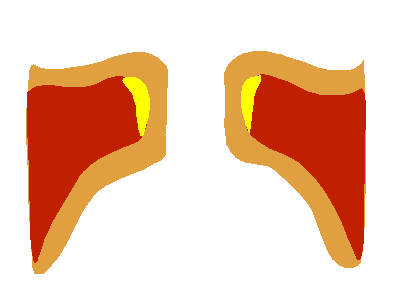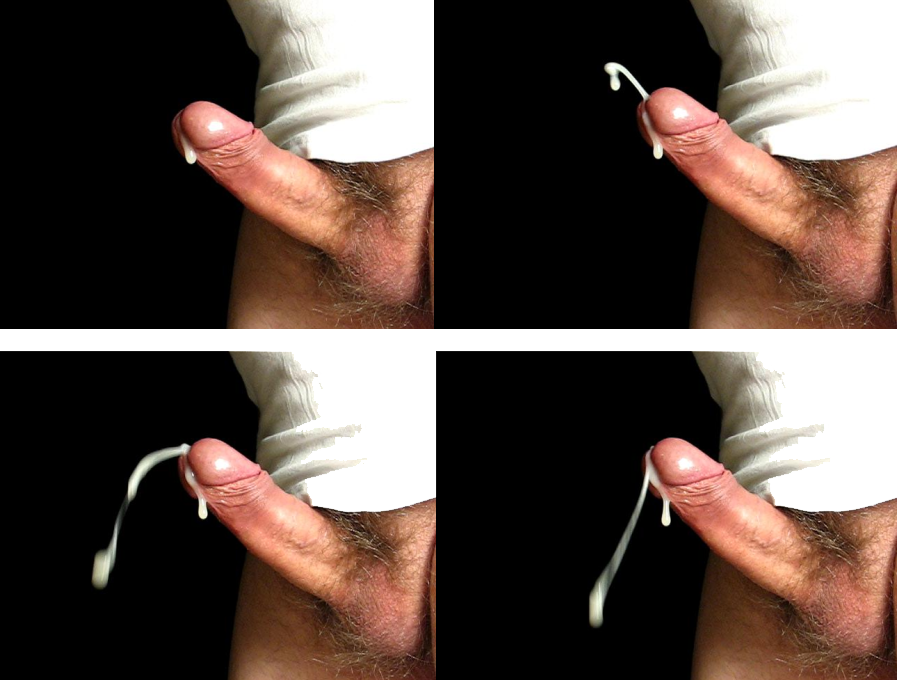|
Spasm
A spasm is a sudden involuntary contraction of a muscle, a group of muscles, or a hollow organ such as the bladder. A spasmodic muscle contraction may be caused by many medical conditions, including dystonia. Most commonly, it is a muscle cramp which is accompanied by a sudden burst of pain. A muscle cramp is usually harmless and ceases after a few minutes. It is typically caused by ion imbalance or muscle overload. There are other causes of involuntary muscle contractions, and some of these may cause a health problem. Description and causes Various kinds of involuntary muscle activity may be referred to as a "spasm". A spasm may be a muscle contraction caused by abnormal nerve stimulation or by abnormal activity of the muscle itself. A spasm may lead to muscle strains or tears in tendons and ligaments if the force of the spasm exceeds the tensile strength of the underlying connective tissue. This can occur with a particularly strong spasm or with weakened connective ti ... [...More Info...] [...Related Items...] OR: [Wikipedia] [Google] [Baidu] |
Spasmodic Dysphonia
Spasmodic dysphonia, also known as laryngeal dystonia, is a disorder in which the muscles that generate a person's voice go into periods of spasm. This results in breaks or interruptions in the voice, often every few sentences, which can make a person difficult to understand. The person's voice may also sound strained or they may be nearly unable to speak. Onset is often gradual and the condition is lifelong. The cause is unknown. Risk factors may include family history. Triggers may include an upper respiratory infection, injury to the larynx, overuse of the voice, and psychological stress. The underlying mechanism is believed to typically involve the central nervous system, specifically the basal ganglia. Diagnosis is typically made following examination by a team of healthcare providers. It is a type of focal dystonia. While there is no cure, treatment may improve symptoms. Most commonly this involves injecting botulinum toxin into the affected muscles of the larynx. Th ... [...More Info...] [...Related Items...] OR: [Wikipedia] [Google] [Baidu] |
Cramp
A cramp is a sudden, involuntary, painful skeletal muscle contraction or overshortening associated with electrical activity; while generally temporary and non-damaging, they can cause significant pain and a paralysis-like immobility of the affected muscle. A cramp usually goes away on its own over a period of several seconds, or minutes. Cramps are common and tend to occur at rest, usually at night (nocturnal leg cramps). They are also often associated with pregnancy, physical exercise or overexertion, age (common in older adults), in such cases, cramps are called idiopathic, because there is no underlying pathology. In addition to those benign conditions cramps are also associated with many pathologic conditions. Skeletal muscle cramps may be caused by muscle fatigue or a lack of electrolytes such as sodium (a condition called hyponatremia), potassium (called hypokalemia), or magnesium (called hypomagnesemia). Some skeletal muscle cramps do not have a known cause. Motor neuron ... [...More Info...] [...Related Items...] OR: [Wikipedia] [Google] [Baidu] |
Antispasmodic
An antispasmodic (synonym: spasmolytic) is a pharmaceutical drug or other agent that suppresses muscle spasms. Smooth muscle spasm One type of antispasmodics is used for smooth muscle relaxation, especially in tubular organs of the gastrointestinal tract. The effect is to prevent spasms of the stomach, intestine or urinary bladder. Both dicyclomine and hyoscyamine are antispasmodic due to their anticholinergic action. Both of these drugs have general side effects and can worsen gastroesophageal reflux disease. Mebeverine is a musculotropic spasmolytic with a strong and selective action on the smooth muscle spasm of the gastrointestinal tract, particularly of the colon. It does not have the acetylcholine side effect commonly seen in an anticholinergic antispasmodic. Papaverine is an opium alkaloid used to treat visceral spasms, erectile dysfunction and investigated as antipsychotic drug due to its potency to inhibit phosphodiesterase PDE10A. Peppermint oil has been traditio ... [...More Info...] [...Related Items...] OR: [Wikipedia] [Google] [Baidu] |
Cadaveric Spasm
Cadaveric spasm, also known as postmortem spasm, instantaneous rigor mortis, cataleptic rigidity, or instantaneous rigidity, is a rare form of muscular stiffening that occurs at the moment of death and persists into the period of rigor mortis. Cadaveric spasm can be distinguished from rigor mortis as the former is a stronger stiffening of the muscles that cannot be easily undone, while rigor mortis can. Muscles respond to electric stimuli and the muscular reaction is alkaline. The cause is unknown but is usually associated with violent deaths under extreme physical circumstances with intense emotion, such as the circumstances associated with death via combustion. Manifestation Cadaveric spasm may affect all muscles in the body, but typically only groups, such as the forearms, or hands. Cadaveric spasm is seen in cases of drowning victims when grass, weeds, roots or other materials are clutched, and provides evidence of life at the time of entry into the water. Cadaveric spasm of ... [...More Info...] [...Related Items...] OR: [Wikipedia] [Google] [Baidu] |
Muscle Contraction
Muscle contraction is the activation of tension-generating sites within muscle cells. In physiology, muscle contraction does not necessarily mean muscle shortening because muscle tension can be produced without changes in muscle length, such as when holding something heavy in the same position. The termination of muscle contraction is followed by muscle relaxation, which is a return of the muscle fibers to their low tension-generating state. For the contractions to happen, the muscle cells must rely on the interaction of two types of filaments which are the thin and thick filaments. Thin filaments are two strands of actin coiled around each, and thick filaments consist of mostly elongated proteins called myosin. Together, these two filaments form myofibrils which are important organelles in the skeletal muscle system. Muscle contraction can also be described based on two variables: length and tension. A muscle contraction is described as isometric if the muscle tension changes ... [...More Info...] [...Related Items...] OR: [Wikipedia] [Google] [Baidu] |
Dystonia
Dystonia is a neurological hyperkinetic movement disorder in which sustained or repetitive muscle contractions result in twisting and repetitive movements or abnormal fixed postures. The movements may resemble a tremor. Dystonia is often intensified or exacerbated by physical activity, and symptoms may progress into adjacent muscles. The disorder may be hereditary or caused by other factors such as birth-related or other physical trauma, infection, poisoning (e.g., lead poisoning) or reaction to pharmaceutical drugs, particularly neuroleptics, or stress. Treatment must be highly customized to the needs of the individual and may include oral medications, chemodenervation botulinum neurotoxin injections, physical therapy, or other supportive therapies, and surgical procedures such as deep brain stimulation. Classification There are multiple types of dystonia, and many diseases and conditions may cause dystonia. Dystonia is classified by: # Clinical characteristics such as a ... [...More Info...] [...Related Items...] OR: [Wikipedia] [Google] [Baidu] |
Myoclonus
Myoclonus is a brief, involuntary, irregular (lacking rhythm) twitching of a muscle or a group of muscles, different from clonus, which is rhythmic or regular. Myoclonus (myo "muscle", clonic "jerk") describes a medical sign and, generally, is not a diagnosis of a disease. These myoclonic twitches, jerks, or seizures are usually caused by sudden muscle contractions (''positive myoclonus'') or brief lapses of contraction (''negative myoclonus''). The most common circumstance under which they occur is while falling asleep (hypnic jerk). Myoclonic jerks occur in healthy people and are experienced occasionally by everyone. However, when they appear with more persistence and become more widespread they can be a sign of various neurological disorders. Hiccups are a kind of myoclonic jerk specifically affecting the diaphragm. When a spasm is caused by another person it is known as a ''provoked spasm''. Shuddering attacks in babies fall in this category. Myoclonic jerks may occ ... [...More Info...] [...Related Items...] OR: [Wikipedia] [Google] [Baidu] |
Jactitation (medicine)
In medicine, jactitation (sometimes jactation) is a restless tossing in bed, seen in severe fevers and certain mental disorder A mental disorder, also referred to as a mental illness or psychiatric disorder, is a behavioral or mental pattern that causes significant distress or impairment of personal functioning. Such features may be persistent, relapsing and remitti ...s; or more generally a tossing to and fro or jerking and twitching of the body. It derives ultimately from the Latin ''jactitare'', to toss about. References Symptoms and signs: musculoskeletal system {{med-sign-stub ... [...More Info...] [...Related Items...] OR: [Wikipedia] [Google] [Baidu] |
Nausea
Nausea is a diffuse sensation of unease and discomfort, sometimes perceived as an urge to vomit. While not painful, it can be a debilitating symptom if prolonged and has been described as placing discomfort on the chest, abdomen, or back of the throat. Over 30 definitions of nausea were proposed in a 2011 book on the topic. Nausea is a non-specific symptom, which means that it has many possible causes. Some common causes of nausea are gastroenteritis and other gastrointestinal disorders, food poisoning, motion sickness, dizziness, migraine, fainting, low blood sugar, anxiety, and lack of sleep. Nausea is a side effect of many medications including chemotherapy, or morning sickness in early pregnancy. Nausea may also be caused by disgust and depression. Medications taken to prevent and treat nausea and vomiting are called antiemetics. The most commonly prescribed antiemetics in the US are promethazine, metoclopramide, and the newer ondansetron. The word nausea is from Lat ... [...More Info...] [...Related Items...] OR: [Wikipedia] [Google] [Baidu] |
Ejaculation
Ejaculation is the discharge of semen (the ''ejaculate''; normally containing sperm) from the male reproductory tract as a result of an orgasm. It is the final stage and natural objective of male sexual stimulation, and an essential component of natural conception. In rare cases, ejaculation occurs because of prostatic disease. Ejaculation may also occur spontaneously during sleep (a nocturnal emission or "wet dream"). ''Anejaculation'' is the condition of being unable to ejaculate. Ejaculation is usually very pleasurable for men; '' dysejaculation'' is an ejaculation that is painful or uncomfortable. Retrograde ejaculation is the condition where semen travels backwards into the bladder rather than out the urethra. Phases Stimulation A usual precursor to ejaculation is the sexual arousal of the male, leading to the erection of the penis, though not every arousal nor erection leads to ejaculation. Penile sexual stimulation during masturbation or vaginal, anal, oral, or ... [...More Info...] [...Related Items...] OR: [Wikipedia] [Google] [Baidu] |
Cricopharyngeal Spasm
Cricopharyngeal spasms occur in the cricopharyngeus muscle of the pharynx. Cricopharyngeal spasm is an uncomfortable but harmless and temporary disorder. Signs and symptoms * Sensation of a 'lump' in the back of the throat * Throat feels swollen * Discomfort - Lump can often feel quite big and pain is occasional * Symptoms normally worse in the evening * Stress aggravates the symptoms * Saliva is difficult to swallow, yet food is easy to swallow - eating, in fact, often makes the tightness go away for a time * 'Lump' sensation comes and goes from day to day * Symptoms can persist for very long periods, often several months. * The symptoms can be mimicked by pushing on the cartilage in the neck, just below the Adam's apple Physiology There are two sphincters in the oesophagus. They are normally contracted and they relax when one swallows so that food can pass through them going to the stomach. They then squeeze closed again to prevent regurgitation of the stomach contents and p ... [...More Info...] [...Related Items...] OR: [Wikipedia] [Google] [Baidu] |
Convulsion
A convulsion is a medical condition where the body muscles contract and relax rapidly and repeatedly, resulting in uncontrolled shaking. Because epileptic seizures typically include convulsions, the term ''convulsion'' is sometimes used as a synonym for ''seizure''. However, not all epileptic seizures lead to convulsions, and not all convulsions are caused by epileptic seizures. Convulsions are also consistent with an electric shock and improper enriched air scuba diving. Non-epileptic convulsions have no relation with epilepsy, and are caused by non-epileptic seizures. Convulsion is a common term generally describing uncontrollable muscle contractions. The term convulsion has been used interchangeably with the word "seizure". Seizures may cause a person to have convulsions, but this is not always the case. Convulsion is a type of seizure that involves bursts of electrical activity in the brain. Occasionally the reason for a convulsion is unfamiliar. A convulsion may be caused ... [...More Info...] [...Related Items...] OR: [Wikipedia] [Google] [Baidu] |



